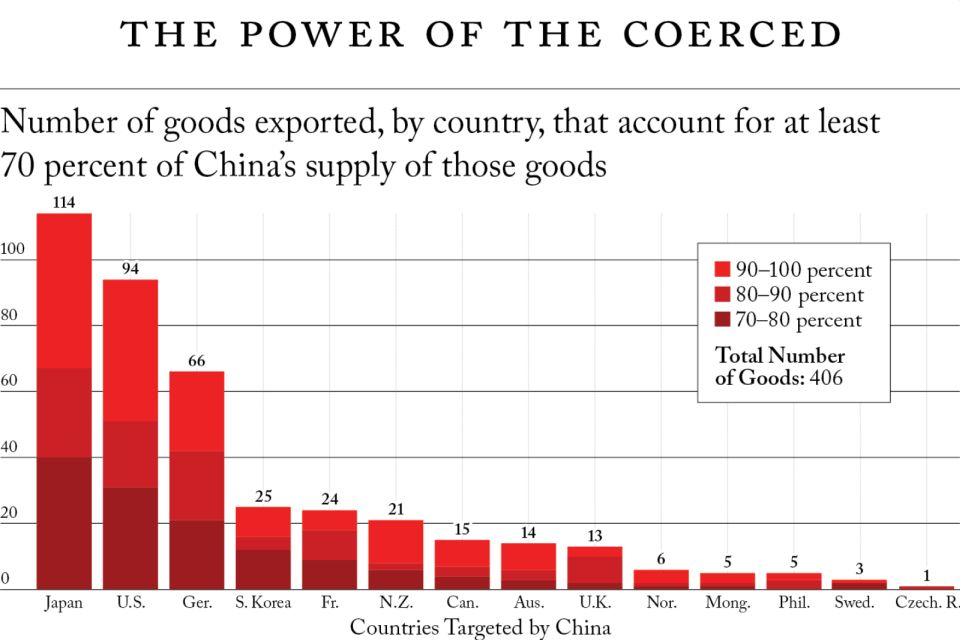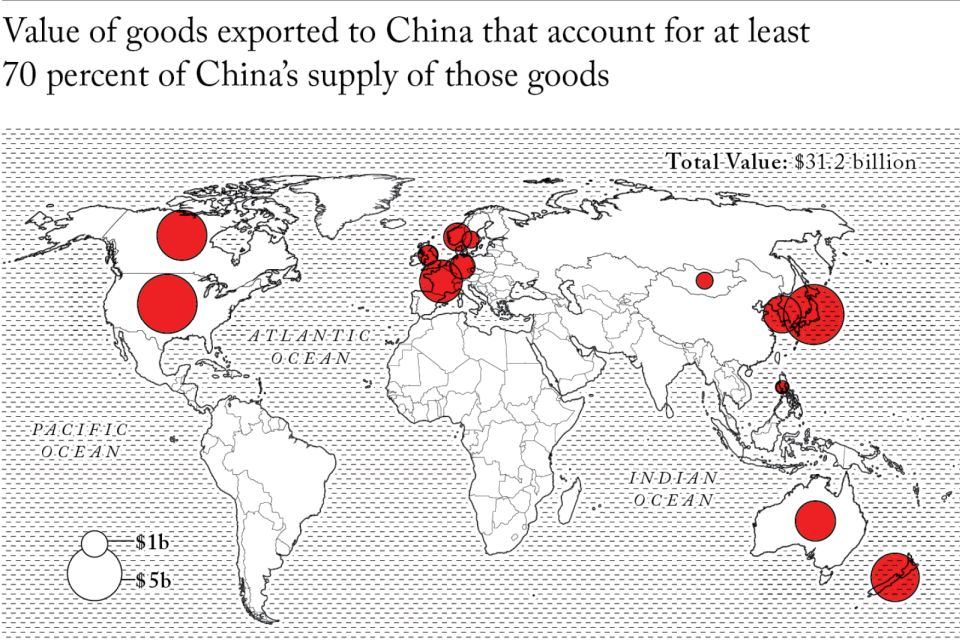By Eric Vandenbroeck
and co-workers
It Took Just Seven Words But NBA-China's
Viewership Is Approaching Pre-Ban Levels.
It took just seven words
for the National Basketball Association to get canceled by Beijing. As
pro-democracy protesters swarmed the streets of Hong Kong in October 2019,
Daryl Morey, then the general manager of the Houston Rockets, one of the NBA’s
30 teams, posted a simple message to his Twitter account: “Fight for freedom,
stand with Hong Kong.” Chinese broadcasters and streamers quickly announced
that they would no longer show his team’s games. The league, which has more
viewers in China than in the United States, immediately tried to distance
itself from Morey’s tweet, writing that the general manager didn’t speak for
the NBA and issuing a statement that implicitly rebuked him. That response
fostered a backlash among fans outside China and did nothing to please Beijing.
A bipartisan collection of U.S. senators blasted the league for not standing by
Morey’s freedom of expression while all 11 of the NBA’s Chinese sponsors and
partners suspended their cooperation. With a couple of exceptions, China’s
broadcasters stopped airing NBA games until March 2022. The league’s
commissioner, Adam Silver, estimated that the rupture cost his organization
hundreds of millions.

At first glance, the
row between China and the NBA may seem like small potatoes: a tiny example of
how the U.S.-Chinese relationship is now more defined by contestation than by
close economic partnership. But Beijing’s behavior toward the NBA is emblematic
of a much more significant and worrying pattern that the Biden administration’s
China strategy does not wholly address. Over the last dozen years, Beijing has
slapped discriminatory sanctions on trading partners interacting with Taiwan or
supporting democracy in Hong Kong. It has imposed embargoes on and fueled
boycotts against countries and companies that speak out against genocide in
Xinjiang or repression in Tibet. Indeed, the Chinese Communist Party (CCP) has gone
after almost any entity that has crossed China in any way. And this strategy
has worked. Because the Chinese economy is so integral to global markets,
China’s coercive behavior has caused tens of billions of dollars in damage. The
mere threat of Chinese cutoffs is now prompting states and businesses to stay
quiet about Beijing’s abuses.
This silence is both
deafening and dangerous. The CCP is carrying out a genocide of China’s Uyghur
minority in Xinjiang, engaging in a wide variety of other human rights abuses,
and menacing nearby countries—but states are too afraid to respond. Left
unchecked, this paralysis could hollow out the postwar liberal order. Should
they fear significant penalties? Few governments, for instance, will come to
Taiwan’s defense if China attacks it. They will not help New Delhi if China
attempts to take more Indian land in the Himalayas. They will hesitate to join
the White House’s supply chain initiatives.
Concerned countries
could appeal to the World Trade Organization, the usual arbiter of
international economic disputes, to try to free them from the specter of
Chinese sanctions. But the WTO is unlikely to be of any help. It can
investigate an 80.5 percent Chinese tariff on Australian barley as
discriminatory. Still, if China stops importing bananas from the Philippines or
stops sending tour groups to Korea by citing the “will of the Chinese people,”
there is little the organization can do in response.
The Biden
administration is aware that Chinese economic predation is a significant
problem. It has responded by advocating resilient supply chains among
like-minded partners in everything from personal protective equipment to memory
chips, allowing these states to stop relying so much on Chinese-made goods. The
administration has also imposed export controls on the transfer of advanced
computing chips and chip-making equipment to China. It may soon extend these
controls to quantum information science, biotechnology, artificial
intelligence, and advanced algorithms.
But these efforts are,
at best, a partial solution. Countries may be able to wean themselves from some
Chinese goods in the supply chain, but Biden cannot reasonably expect most of
them to decouple from one of the largest economies in the world. Export
controls by the United States on transferring cutting-edge technologies to
China won’t work unless other countries possessing such technology—including
Denmark, Japan, the Netherlands, South Korea, and the United Kingdom—join in.
And these states may choose not to participate in Washington’s supply-chain and
technological coalitions because they fear Chinese economic retaliation.
To successfully
compete with China,, the United States needs to do more than insulate
states from Chinese coercion. It needs to stop the pressure from happening in
the first place. To do so, the United States will need to band together with
its partners and draw up a new strategy, one of collective resilience. China
assumes it can boss other countries around because of its size and central role
in the global economy. But China still imports enormous numbers of goods: for
hundreds of products, the country’s economy is more than 70 percent dependent
on imports from states that Beijing has coerced. Together, these goods are
worth more than $31.2 billion to the Chinese economy. For nearly $9.1 billion
worth of items, China is more than 90 percent dependent on suppliers in states
it has targeted. Washington should organize these countries into a club that
threatens to cut off China’s access to vital goods whenever Beijing acts
against any single member. States will finally be able to deter China’s
predatory behavior through such an entity.
Dealing with China’s
weaponization of trade will be necessary if the Biden administration wants to
compete successfully with Beijing. And although a U.S.-led collective
resilience bloc may strike proponents of globalization as mercantilists, they
should understand that it is essential to their project. China will continue to
abuse its economic position and distort markets until it is forced to stop.
Collective deterrence may be the best way to keep the global economy free and
open.

Wild Abandon
China’s predatory
actions are carefully designed to hit countries where it hurts most. Consider
what Beijing did to Norway in 2010. After a Norwegian committee awarded the
Nobel Peace Prize to a Chinese dissident, Beijing heavily restricted imports of
Norwegian salmon. Over the next year, the product went from cornering almost 94
percent of China’s salmon market to just 37 percent, a collapse that deprived
the Norwegian economy of $60 million in one year. After South
Korea agreed to host a U.S. missile system in 2016, Beijing forced stores
in China owned by the enormous Seoul-based Lotte Group to shut down, causing
over $750 million in economic damage. China similarly banned and then heavily
restricted the sale of group tours to South Korea, costing the country an
estimated $15.6 billion.
Beijing also
frequently targets individual businesses if they or their employees deviate
from China’s official positions. In 2012, Chinese protesters—encouraged,
according to a Los Angeles Times report, by Beijing—shut down
Toyota’s manufacturing plants in China in response to tensions over the Senkaku
Islands, which are administered by Tokyo but which Beijing claims (and refers
to as the Diaoyu Islands). In 2018, Beijing took the website of Marriott Hotels
offline for a week after the company sent an email to its rewards members. It
listed Hong Kong, Macao, Taiwan, and Tibet as separate countries. The company
apologized and issued a public statement against separatist movements in China.
The same year, Beijing made more than 40 airlines—including American, Delta,
and United—remove references to Taiwan as a separate country on their websites
simply by sending them a threatening letter. And in 2021, the Chinese state
media egged on a boycott of the Swedish fashion retailer H&M after it
expressed concern about forced labor in Xinjiang. H&M sales in China quickly
dropped by 23 percent.
To be fair, China is
not the only country that engages in economic coercion. It is, in some ways,
endemic to the international system. Writing on these pages in January
2020, political scientists Henry Farrell and Abraham Newman observed
that globalization had enabled many countries to leverage financial power
in pursuit of political ends, a phenomenon they have called “weaponized
interdependence” in their earlier work. This isn’t always a negative. Indeed,
in some situations, states have weaponized interdependence to target bad
international behavior. For example, the widespread Western sanctioning of
Russia for the war in Ukraine and the United States' financial sanctions
against North Korea and Iran for nuclear proliferation were designed to curtail
illegal and dangerous acts.
But what China is
doing is different, both in scale and kind. The United States may
issue frequent sanctions, but these follow a clear set of processes: Washington
does not weaponize economic interdependence through such a wide variety of
means. One recent study identified 123 cases of coercion since 2010, carried
out through widespread boycotts against companies, restrictions on trade,
limits on tourism to foreign countries, and other mechanisms. And aside from
when the Trump administration levied a bizarre spate of tariffs against
American allies, no other government has imposed sanctions or embargoes so
casually, penalizing states for mild annoyances rather than broadly
unacceptable international actions, such as Russia’s invasion of Ukraine. There
is, for example, a direct correlation between countries whose leaders have met
with the Dalai Lama and a decline in those states’ exports to China.
Beijing is
unapologetic about using these sanctions and does not acknowledge that they
violate global trading norms. It is not worried about domestic discontent
arising from its behavior because the illiberal nature of China’s political
system insulates the government from pushback. And because its trading partners
are all more dependent on China than the other way around, Beijing usually has
the advantage. As the Chinese ambassador to New Zealand warned in 2022, “An
economic relationship in which China buys nearly a third of the country’s
exports shouldn’t be taken for granted.”
Half Measures
Beijing’s long-term
objective is to force governments and companies to anticipate, respect, and
defer to Chinese interests in all future actions. It seems to be working. Major
democracies such as South Korea remained silent when China passed a national
security law in Hong Kong suppressing democracy in 2020. In 2021, Brazil did
not exclude the Chinese telecommunications giant Huawei from its 5G auction for
fear of losing billions of dollars in business. In 2019, after the Gap clothing
company released a T-shirt design with a map of China that did not include
Taiwan and Tibet, it issued a public apology. It removed the shirt from the
sale even before Beijing said anything. After the salmon restrictions in 2010,
Norwegian leaders refused to meet with the Dalai Lama when he visited in 2014.
And according to reports and investigations by various organizations, including The
Atlantic, The Wall Street Journal, and the human rights
nonprofit PEN America, Hollywood companies won’t produce films that cast China
in a negative light for fear of losing ticket sales.
Beijing’s apparent
success doesn’t mean that countries have sat idly by while China has weaponized
economic interdependence. The world’s heavy reliance on Chinese
manufacturing—starkly illustrated by shortages of masks and other personal
protective equipment in the early phase of the COVID-19 pandemic—has
prompted almost every country to become more attuned to its economic security.
Japan, for instance, set up a new cabinet position for financial security in
October 2021 and passed legislation to guard critical supply chains and
technologies. During the spring of 2022, in the aftermath of Beijing’s coercion
and the pandemic, South Korea created an early warning system designed to
detect threats to nearly 4,000 key industry materials. The South Korean
government also established a new economic security position in the
presidential office.

Fans watching an NBA game in Shenzhen, China, October
2019
States have also gotten
better at redirecting trade, meaning that when China imposes tariffs or an
import embargo on a target state’s goods, the target state finds alternative
markets. This strategy has seen some success. Throughout 2020, China approved
tariffs on Australian barley, coal, and wine in response to Canberra’s calls
for an independent investigation into COVID-19’s origins, prompting Australia
to redirect these goods to the rest of the world. When China restricted exports
of rare-earth minerals to Japan over a territorial dispute in 2010, Japan
diversified its sources of critical minerals and invested more in domestic
seabed exploration. As a result, it has reduced its dependence on China for
necessary minerals from 90 percent to 58 percent in a decade.
Countries are now
following Biden’s advice to “reshore” and “friend
shore” supply chains, moving vital elements of the production from China (or
places where China exercises inordinate influence) to manufacturers back home
or to trusted partner economies. Through the Quadrilateral Security Dialogue,
known as the Quad, Australia, India, Japan, and the United States are
building resilient supply chains for COVID-19 vaccines, semiconductors, and
emerging and critical technologies, including those related to clean energy.
The countries participating in the Biden administration’s Indo-Pacific Economic
Framework are working on establishing an early warning system, mapping out
critical supply chains, and diversifying their sources for imported goods. In
June, the United States announced the Minerals Security Partnership, an
alliance with Australia, Canada, Finland, France, Japan, Norway, South Korea,
Sweden, the United Kingdom, and the European Union to safeguard the supply of
copper, lithium, cobalt, nickel, and rare-earth minerals. Japan, South Korea,
Taiwan, and the United States are contemplating the creation of an alliance
called Chip 4 that would consolidate the semiconductor supply chain.
These measures are
all valuable and necessary. But they need to constitute a comprehensive
solution. Reshoring and friend shoring insulate states against China’s
disruptions to the production chain while doing nothing to stop its economic
coercion: securing the supply of one product does not prevent Beijing from
cutting countries off from another product. Indeed, countries’ enthusiasm for
participating in such measures is limited by fears that China will retaliate.
South Korea, for example, has hesitated to join the Chip 4 alliance partly
because it is concerned that Beijing would once again ban many of its consumer
goods and block the flow of Chinese tourists. Supply chain resilience, trade
diversion, and reshoring can work only if complemented by a strategy crafted to
end China’s predatory economic behavior.
Flipping The Script
Part of China’s
hubris in practicing economic coercion against its trade partners comes from
the confidence that the targets will not dare counter-sanctions with concrete
action. Beijing is suitable to be confident: it is hard for any country to go
up against an economic behemoth. China, for instance, accounts for 31.4 percent
of global trade in Australia, 22.9 percent in Japan, 23.9 percent in South
Korea, and 14.8 percent in the United States—. In contrast, those countries
account for 3.6 percent, 6.1 percent, 6.0 percent, and 12.5 percent of China’s
trade.
But these states can
fight back if they work together or, in other words, practice collective
resilience. That strategy would flip the script. Australia, Japan, South Korea,
and the United States may individually be at a disadvantage but combined, they
account for nearly 30 percent of China’s imports, exceeding what China’s
exports account for in most of theirs. Add Canada, the Czech Republic, France,
Germany, Lithuania, Mongolia, New Zealand, Norway, Palau, the Philippines,
Sweden, and the United Kingdom—all countries Beijing has coerced in the
past—and the collective share of China’s imports is 39 percent. These states
all produce critical goods on which China is especially dependent. China gets
nearly 60 percent of its iron ore from Australia, which is essential to its steel
production. It gets more than 80 percent of its bulldozers and Kentucky
bluegrass seed, significant for sowing fields, from the United States. More
than 90 percent of China’s supplies of other goods—cardboard, ballpoint pens,
cultured pearls—are sourced from Japan. And 80 percent of China’s whiskey comes
from the United Kingdom


Source: United Nations COMTRADE database
To build a bloc that
can stop Chinese coercion, Australia, Japan, South Korea, and the United States
must first agree among themselves. The first three governments are the United
States’ key allies in the Pacific, and all four nations are major market
democracies and the core stakeholders in the region’s liberal political and
economic order. A commitment to join forces would not be without risk, but all
have been prime targets of Chinese financial predation and have a powerful
incentive to collaborate.
These four states
must then take stock of which other countries are willing and able to join in,
working through existing partnerships such as the Indo-Pacific Economic
Framework to promote the strategy. The 12 other states most profoundly affected
by Chinese economic coercion would be the best membership candidates. Many of
these countries may be very weak compared with China. But if they joined forces
with the four main members, they would enjoy formidable leverage: for 406 items,
China imports more than 70 percent of what it uses from one of these 16 states;
for 171 of those items, the import figure rises to 90 percent. (Lithuania and
Palau do not produce any of these goods, but both are frontline states in need
of protection, so they should be welcomed into the coalition.) The four
founding countries could also approach the European Union, which is currently considering milder measures to
counter Beijing’s coercion, to see whether it is interested in joining their
effort.
The impact of these
imports is far from trivial. For example, China relies on Japan for more than
70 percent of its supplies of 114 items, amounting to over $6.2 billion in
trade, and more than 90 percent of its reserves of 47 items, worth over $1.7
billion. China is over 70 percent dependent on U.S. producers for 94 items,
totaling over $6.0 billion, and 43 items for which China is around 90 percent
dependent on U.S. producers, worth over $1.5 billion. All 406 of the “high
dependence” goods produced by coerced states are worth more than $31.2 billion
to China.
Strength In Numbers
But having the
capability to fight back is only half the battle. The other half is political
will: For collective resilience to be credible, countries must be willing to
sign up for it in the face of fierce Chinese resistance. Beijing is likely to
use a combination of carrots, such as discounted digital infrastructure, and
sticks, such as more export restrictions, to deter countries from joining and
try to peel them off if they do. States will need to build enough domestic
political support to withstand the external pressure and resist the temptation
to free-ride by accepting coalition support without ever actually sanctioning
China.
Given that most
participants would be democracies, this will prove difficult. But the pact’s
more prominent countries can take several steps to help smaller or poorer
states endure the discomfort. They can create a collective compensation fund
for losses and offer alternative export or import markets to divert trade in
response to Chinese sanctions. Bigger states can also provide clear
reassurances to smaller powers that they would not be left high and dry if
Beijing slapped them with sanctions. That means the larger countries, mainly
the original four, would need to delineate clear actions they would take to
restrict important exports to China if Beijing bullied any pact member, even if
those steps were economically costly to them. The four organizing members would
also have to agree on what types of bullying would elicit a response. Disputes
over trade that could be adjudicated by the WTO, such as whether China can
adjudicate Western technology patent protections in its courts, would not meet
the threshold. The trigger would be coercive Chinese economic actions taken for
political purposes.
Yet despite the
challenges, states would likely recognize that joining the pact and staying the
course is worth the short-term costs. They would need to recognize and explain
to their citizens that ending Chinese economic coercion would ultimately be in
their long-term interests. China could initially fight against the new group by
finding alternative suppliers for one, two, or several high-dependence goods.
But suppose tariffs, nontariff barriers, or embargoes were applied to a wide
range of the 406 high-dependence items made by prospective coalition members.
In that case, the costs of finding new suppliers might cause Beijing to think
twice before taking coercive actions. Eventually, China would have to stop such
behavior, resulting in a level playing field for all of the collective’s
participants.
The participating
states could feel confident that China would indeed stop. Despite its
authoritarian system, China has proved quite sensitive to supply chain
obstacles, evidenced by the fact that it rarely applies sanctions to imports of
high-dependence goods. Beijing was happy to cut off South Korea from Chinese
tourists, but it has not sanctioned Samsung; it needs the company’s memory
chips. It has not touched Taiwan Semiconductor Manufacturing Company, another
critical supplier of computer chips, even as tensions with Taipei reach new
heights. In all its sanctioning of Australia, Beijing never threatened
Australian iron ore, even though it is one of the country’s most lucrative
exports.
Suppose Beijing is
unwilling to locate alternative sources for Australian iron ore at dependency
levels of 60 percent. In that case, it will undoubtedly be sensitive to the
many goods for which it is more than 70 percent dependent on outside
countries—not to mention the ones where its dependence exceeds 90 percent. Then
there are the 40 products made in the United States and Japan, on which China
is 99 or 100 percent reliant. Beijing does not want to lose access to any of
them, especially when it is already struggling from a general economic
slowdown.
Fair And Square
The idea of
collective resilience may trouble proponents of free trade and globalization.
But collective resilience is not a trade war strategy but a peer competition
strategy. It is defensive, resting first on the threat to weaponize trade, not
on the actual use of sanctions. If China does not use its economic power to
coerce, there is no need to make good the threat.
The strategy is also
clearly and narrowly targeted. Its participants are not trying to punish China
just for the sake of doing so; the goal is not to undermine the nation’s
economy. The goal is to deter acts of economic coercion that do not conform to
WTO rules and are aimed at meeting Chinese political goals unrelated to trade.
According to an analysis published by the Chicago Council on Global Affairs, a
nonprofit think tank, about a proposed European Union instrument to combat
Chinese coercion, collective resilience could even comply with WTO regulations.
China’s acts of economic hostility are beyond the remit of the organization’s
laws, and nothing in the WTO rulebook prohibits states from engaging in
self-defense.
That’s not to say that
practicing economic resilience will never require sanctions on China. It may
well do so, at least at first. But policymakers can rest easy knowing that any
sanctions, if properly structured, would ultimately be in service of protecting
economic interdependence. That notion may seem paradoxical, but sometimes
conducting international relations requires living with contradictions. It
certainly wouldn’t be the first time the United States has played dirty to keep
a global system clean. During the Cold War, Washington routinely countenanced illiberal
practices to protect the liberal order—for example, supporting anti-communist
military regimes in South Korea and Taiwan as bulwarks against more brutal
nearby powers. Today, the West may need to compromise on its free trade
principles to prevent Beijing from corrupting globalization. It may need to be
aggressive. A successful defense, after all, requires a good offense—including
in great-power competition.
For updates click hompage here